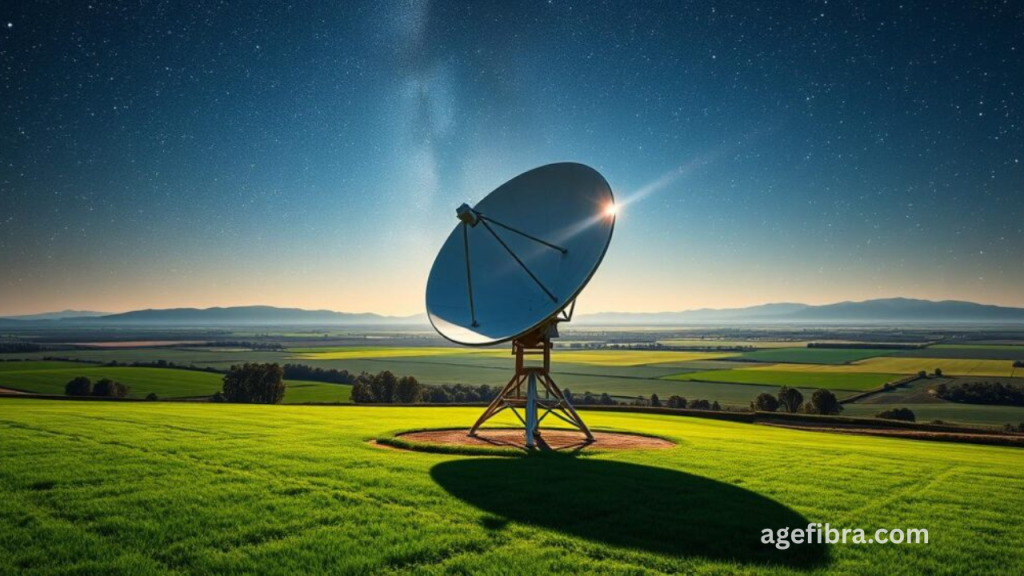Satellite internet is rapidly becoming a game-changer for people living in remote or underserved areas where fiber and cable options are limited. It offers an alternative way to get connected, especially for rural homeowners, off-grid travelers, and digital nomads. However, one of the biggest questions users have is about its speed. Satellite internet speed plays a critical role in determining how smooth your experience will be for streaming, video calls, or even basic browsing.
This guide takes a close look at what satellite internet speed means, how it functions, and how it stacks up against DSL, 4G, or cable connections. It also walks you through key factors that impact performance, such as latency, weather, and equipment setup. Whether you’re considering switching to satellite or trying to optimize your current service, understanding the speed element can help you make informed decisions and get the most from your internet connection.
Understanding Satellite Internet Speed
Satellite internet speed refers to how quickly data travels from your device to the satellite and back to the service provider’s ground station, and vice versa. It is typically measured in megabits per second (Mbps).
This speed is affected by multiple variables, including your chosen provider, your location, your satellite dish’s alignment, and current network congestion. Unlike cable or fiber connections, satellite internet depends on a geosynchronous or low-earth orbit (LEO) satellite to beam signals.
There are two main speed metrics to pay attention to:
- Download Speed – How fast you receive data (e.g., streaming videos or loading websites).
- Upload Speed – How fast you send data (e.g., sending emails or uploading to cloud storage).
Types of Satellite Internet Providers and Their Speeds
Modern satellite internet technology offers a range of speed tiers depending on the provider and their satellite technology. Here’s a breakdown:
Geostationary Satellite Services (e.g., Viasat, HughesNet)
These satellites orbit 22,000 miles above Earth, offering coverage to vast regions. However, due to the distance, latency is usually high.
- Typical Download Speeds: 12–100 Mbps
- Upload Speeds: 1–4 Mbps
- Latency: 600–700 ms
Low-Earth Orbit Services (e.g., Starlink, Amazon Kuiper – upcoming)
LEO satellites operate much closer to the Earth, improving latency and delivering faster speeds with more reliability.
- Typical Download Speeds: 50–250 Mbps
- Upload Speeds: 10–40 Mbps
- Latency: 20–50 ms
LEO systems are transforming expectations, especially for gamers and streamers who need better responsiveness.
Factors That Affect Satellite Internet Speed
Several technical and environmental elements influence your connection quality:
Weather Conditions
Rain, snow, and storms can interfere with satellite signals, causing speed drops or even temporary disconnections.
Network Congestion
Speeds may reduce during peak usage hours when many users are connected at once, especially with shared bandwidth models.
Satellite Dish Alignment
If your dish isn’t properly aligned with the satellite, it can result in poor signal strength and lower speed performance.
Obstructions
Trees, buildings, and other physical barriers can block the satellite line of sight, weakening the signal and reducing speed.
Read More: Starlink is Now Offering Its Satellite Internet Kit for Free
Step-by-Step Guide to Measuring Your Satellite Internet Speed
Want to know if you’re getting the speeds you’re paying for? Here’s how to test satellite internet speed correctly:
Step 1: Use a Reliable Speed Test Tool
Use trusted services like Speedtest.net, Fast.com, or your provider’s speed test tool.
Step 2: Disconnect All Other Devices
Shut off or disconnect all other devices to ensure accurate results for your current device.
Step 3: Connect Directly to Your Modem
For the most accurate results, plug your computer directly into the modem via Ethernet instead of relying on Wi-Fi.
Step 4: Run the Speed Test Multiple Times
Run tests at different times (morning, afternoon, evening) to get an average reading.
Step 5: Compare with Advertised Speeds
Check your results against the speeds promised by your satellite provider. If there’s a big gap, contact support or consider upgrading.
Tips to Improve Satellite Internet Speed
You may not be able to change your satellite’s orbit, but you can make the most of your connection with these adjustments:
Optimize the Placement of the Satellite Dish
Ensure it’s aimed correctly with a clear line of sight to the sky. Repositioning can significantly improve signal strength.
Limit Background Data Usage
Close auto-updates, cloud syncs, or streaming from multiple devices simultaneously.
Use Ethernet Instead of Wi-Fi
A wired connection is more stable and faster, reducing the chance of slowdowns.
Schedule Heavy Downloads
Download large files during off-peak hours when fewer users are online.
Common Mistakes That Slow Down Satellite Internet
Even the best satellite plan can feel sluggish if you fall into these traps:
Overusing Multiple Devices
Satellite bandwidth is limited. If multiple users stream HD content at once, your connection can choke.
Ignoring Latency
Even if your download speed is high, latency can hurt real-time activities like gaming or Zoom calls. LEO satellites are better suited for these.
Using Outdated Equipment
Old modems or routers can bottleneck your speeds. Always use the latest hardware recommended by your provider.
Real-Life Use Cases of Satellite Internet Speed
Remote Work
A freelance writer in a rural Montana cabin uses Starlink to hold video calls and upload content quickly, relying on its 200+ Mbps speeds to stay productive.
Online Schooling
Families in off-grid Alaska use Viasat for kids’ Zoom classes and learning portals. Though latency can be an issue, it’s stable for most tasks.
Traveling Digital Nomads
Vanlifers using RV-mounted HughesNet antennas stay connected on the go. It supports emails and browsing, though streaming can be limited.
Emergency Communication
During natural disasters, satellite internet is used by first responders to coordinate rescue efforts where terrestrial networks have failed.
Frequently Asked Questions
What is considered good satellite internet speed in 2025?
For general browsing and streaming, speeds above 50 Mbps are good. For remote work or gaming, aim for 100–250 Mbps with low latency.
Can I stream 4K video with satellite internet?
Yes, with LEO services like Starlink, 4K streaming is possible. However, Geostationary options may buffer unless using lower resolutions.
Why does satellite internet have high latency?
Signals must travel long distances to space and back, causing delays, especially with traditional geosynchronous satellites.
Is satellite internet faster than DSL or 4G?
Modern LEO satellite internet is faster than DSL and can match or exceed 4G speeds, though 5G may still outperform it in urban areas.
How do data caps affect speed?
Some providers throttle your speeds after a data limit is reached. Always check the fine print to avoid slowdowns.
Can I use VPNs with satellite internet?
Yes, but VPNs may further slow down already high-latency connections, especially with geostationary providers.
How long does it take to install satellite internet?
Installation typically takes 1–2 hours. Some providers offer DIY kits, while others require a professional technician.
Conclusion
Satellite internet speed has improved significantly, offering fast and stable connections even in remote areas. With advancements like low-earth orbit satellites, users now experience lower latency and higher performance. By understanding the factors that affect speed and applying simple optimizations, you can enjoy smoother streaming, reliable remote work, and efficient browsing. Satellite internet is no longer a backup option—it’s a dependable solution for modern digital needs in any location.


